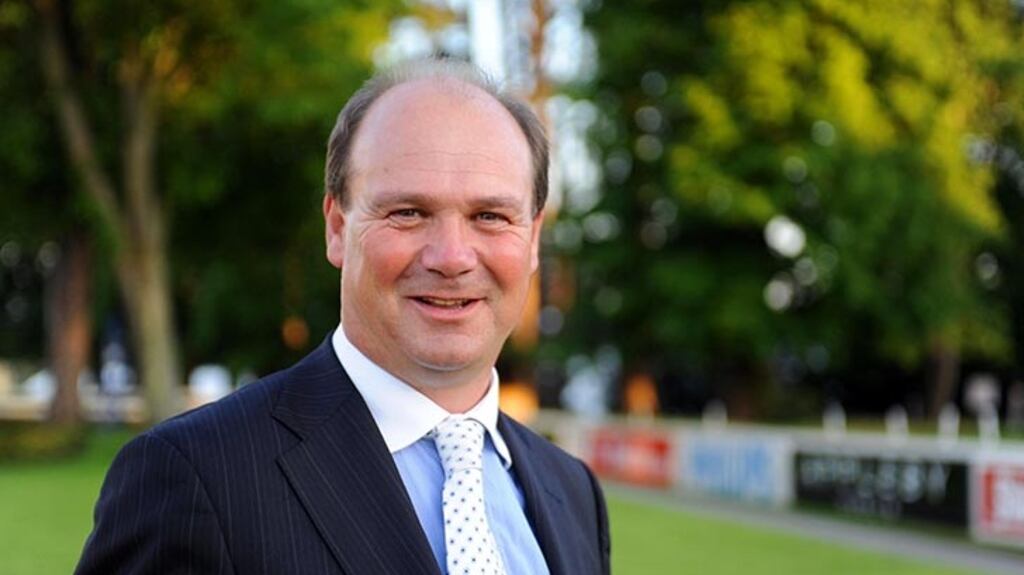Copper Beech Stables on the outskirts of Kildare town may be one of Ireland's most successful flat racing yards, but building it up hasn't always been a smooth ride for trainer Michael Halford.
However, having trained winners at the highest level at home and in Britain and Dubai, his business has not only grown with him, but seen out the recession in an industry that was badly affected.
Halford was introduced to racing at a young age; his father was a farrier on the Curragh. By 16, he was an amateur jockey and after his Leaving Cert, he worked in pedigree research, compiling catalogues.
However, when the offer of a job with Wetherby’s in the UK was on the table, Halford realised he wasn’t cut out for an office job, though the experience he gained there would stand to his business of buying and selling in later life.
A brief stint as assistant trainer to Noel Meade led to his taking out his training licence at the age of 21.
While training for a syndicate of owners, his father encouraged him to buy four acres of land at Pollardstown on the Curragh and start building a few stables. When the syndicate fell apart, Halford had a ready-made base to begin his business as a dual purpose trainer.
“We trained point-to-pointers, we trained anything and everything. Whatever came our way, we trained,” he says.
He had successes on the flat and in national hunt. Thinking towards the future, he made the decision to move forward to training solely for the flat.
“I remember thinking the jumping was very competitive around the time of the Celtic Tiger. I saw the flat was more of a business for a lot of people and I was training for a lot of owner-breeders. There was a constant flow of horses,” he says.
“I thought there was something more solid about the flat. Most people in national hunt racing are in it for the love of it but with the flat, there were a lot more opportunities.”
Tough measures
With this new venture in mind, Halford started looking for a new yard to expand his operation. This is where the move to his state-of-the-art facilities at Copper Beech Stables began. But it was only grassy fields when it was purchased.
Louise, who later became his wife, had joined the yard as his assistant trainer so it allowed him the freedom to concentrate on the project in hand.
“We got it built by the skin of our teeth just before the economy took a downturn. We didn’t get our place sold on the Curragh which made it a bit tougher. By that stage, we had a lot of support from good owners and we just tightened everything down and kept our overheads as low as we could.”
The business had then grown to more than 100 horses in training but as the recession hit, tough measures had to be taken to keep the business afloat. The decision to move solely to the flat had proved a good one as jumps racing was suffering with the loss of owners whose disposable income had dried up.
“Our numbers went from 100-plus down to 70. We worked hard to hold it at that. We needed that many horses. It was our cut-off point to be able to survive and pay our mortgage,” Halford says.
“I think the biggest expense in training horses is labour. We had to let a couple of lads go, and that was the toughest thing really. We’d very good staff, a lot of them were able to get very good jobs. Some of them retired and they got their redundancy. We kept them employed as long as we could, we didn’t just wake up one morning and draw a line. I knew it was happening and it was all about not running into a dead end with people.
“Even though we hadn’t seen the recession coming, it worked in our favour. We had started to go with the flat racing.”
Halford credits the success of staying afloat to the sheer determination of the team in Copper Beech. He welcomed business advice from many of his owners who were as keen as he was to see him survive, in particular owner and confidant Paul Rooney.
Huge gamble
“To take on a project like this, as big as it is in a business that’s tough, I’m sure it was a huge gamble. In my head I never once believed it wouldn’t work. It never dawned on me that it couldn’t work. I was so convinced we were doing the right thing.,” he says.
“In turn people believed in me. To have the support of good owners, good people around about you, good staff and in particular having Louise there, it was always a case of ‘this will be good’.”
Now with 100 horses in training again and high-profile owners such as His Highness the Aga Khan and Sheikh Mohammed, Halford's yard is able to compete at the highest level in flat racing. The business is all about producing top-class flat horses to be sold or to go for breeding and Halford's future plans involve improving the quality of horses in his yard.
“I don’t necessarily want to grow the business any more; there is an optimum number of horses every trainer is comfortable with. We’ve managed to improve the quality of horses year on year; if we can keep that up it takes us to better races and bigger places,” he says.



















